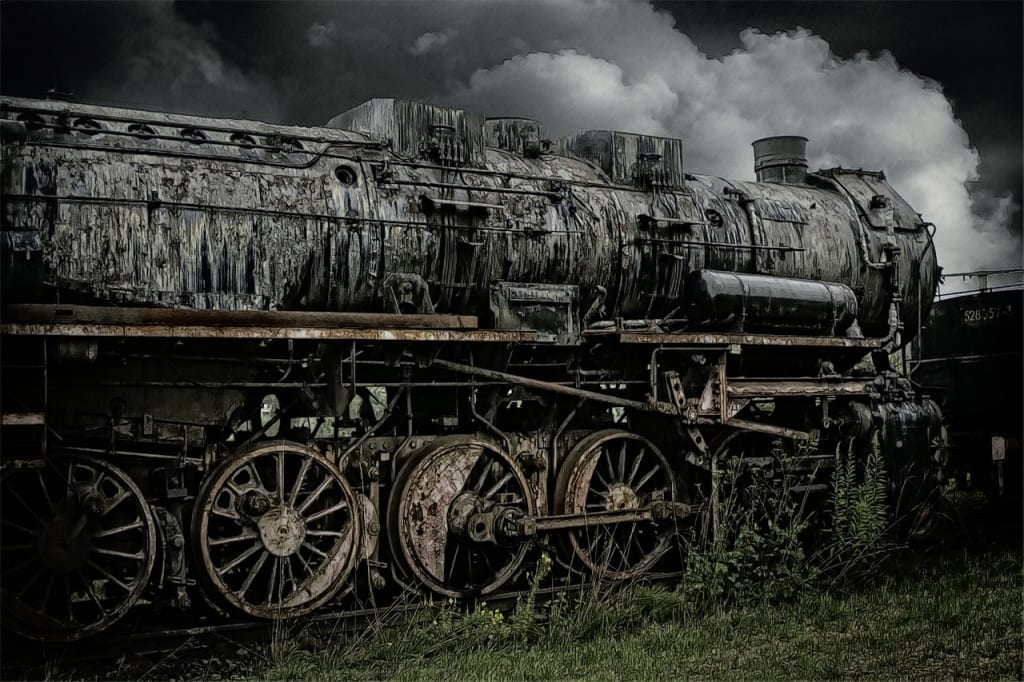The History of Rail Travel in Under 6 Minutes
train

[Music] welcome to the history of public transports a series will be delve into some of the most popular modes of transportation that gets us through our day-to-day lives and take a look at how they came to be this episode will be spanning from the wagon ways of ancient Greece to the steam-powered visions of george stephenson so sit back relax and wait for the refreshments trolley because this is the history of rail travel if we're going to be looking at the full history of rail travel we're going to have to go way back to the Year 600 BC the Daioh Coast in Corinth Greece is one of the earliest known rut ways which is a predecessor to the railways what we know of today it's essentially a paved road with grooves worn into the paths to guide the wheels of large wooden cars that would carry anything from goods to entire naval vessels these early versions of the technique used slaves or animals to move the cars along the tracks many similar versions of this idea existed across ancient Greece and others were found in Malta and other parts of the Roman Empire these early rough ways remained in use for around 600 years and most of them fell into disuse after the Empire collapsed it wasn't until the Dark Ages that the state of rail was closer to what we know of today the earliest known record of railways in Europe is from around 1350 on a stained-glass window in the Minister of Freiburg in Germany but the earliest surviving Railway is a cliff railway to their home in salzburg castle in salzburg austria although it is an updated version it is still functioning to this day by the mid 16th century wooden rail tracks were common in mines all across Europe and by the 1600s horse-drawn wagon ways were common in Britain it wasn't until 1768 in Coalbrookdale England that iron was used in the development of Railways iron plates were secured to wooden rails in order to reduce friction which also allowed for different gauges to be used up until this point all of the developments in the rail industry were for private use mostly for transporting goods but in 1806 the swansea and mumbles railway was opened which was the first horse-drawn passenger railway by this point steam engines had been around for just under a century or beer for pumping water rather than for rail transport and in 1812 Matthew Murray built salamanca which was to be the first commercially successful steam locomotive eventually wooden rails were phased out and more replaced with rails made from raw I earn in 1820 but they were replaced with steel shortly after in 1857 fast forward to 1825 and we find George Stevenson's famous locomotion and four years later came the introduction of Stephenson's rocket Stephenson entered rocket into a competition known as the rain hill trials and as his locomotive was the only entry to meet the full contest requirements he subsequently won the 500 pounds prize and the contract to produce his steam engine designed for the Liverpool and Manchester railway the line was opened in 1830 and was the first intercity route ever built just 20 years later in the 1850s Britain had laid a staggering 7,000 miles of track across the country the construction of the first underground railway the Metropolitan Railway in London began in 1860 and was open in 1863 this line is still running to this day but you may better know it as the Metropolitan line on the London Underground network it was at this point in history that the rail industry started to take off in the United States in 1830 the first working American locomotive built by Peter Cooper was used to cover 30 miles of track between Baltimore and Ohio a stretch of track which later went on to become a full working line a few similar sized lines were opened around this time but it wasn't until the 1850s that long-distance rail travel became a practical reality the American rail system grew massively between then in the 1890s although the Civil War did slow down certain developments by then the first transcontinental railway had been built spanning an enormous 1912 miles from the existing rail networks in Iowa and Nebraska all the way to the Pacific coast of San Francisco it wasn't long until electricity found its way into the railways with the first fully electrified line being completed in northern Italy in 1902 the early 1900's saw the first introduction of diesel power and became commonplace after World War two since the price of labor needed for the upkeep of steam locomotives increased massively and consequently made steam power travel financially impractical during the war internal combustion engine technology had dramatically advanced to a point where they were cheaper to run and even more powerful than steam locomotives which caused many railway companies to switch to diesel and as if the rail industry wasn't suffering enough already the large-scale construction of motorways came shortly after the end of World War two making rail and even more unpopular mode of transportation long haul travelled them became the main concern for railway companies.
About the Creator
Rowan Sharkawy
someone who love to know anything & share it with every one
welcome to my profile






Comments
There are no comments for this story
Be the first to respond and start the conversation.